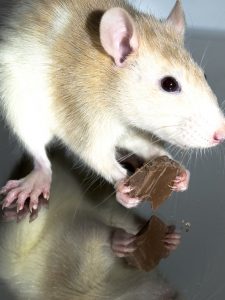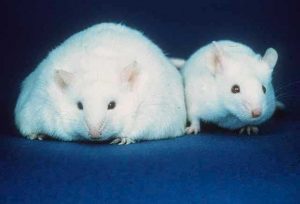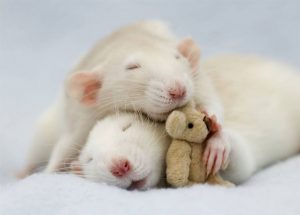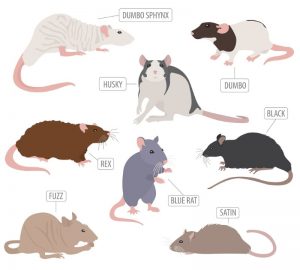What is a rat ?
A Rat is a mouse-like animals. They come in various sizes, from small to medium. Rats are long-tailed rodents; the rat’s long tail helps it to regulate body temperature. Secondly, a rat’s tail allows it to maintain its balance. They climb up walls, trees and walk along narrow ledges. Their tail helps them to keep their weight balanced so they don’t fall. They also come in a variation of colours such as Brown, Grey, black and white.
Rats are typically distinguished from mice by their size. Rats also own two sharp front teeth allowing them to eat anything (as they are omnivores). The rat’s teeth continue to grow throughout its life. So, they have to chew on food and other items to wear down the edges. Furthermore, a rat’s sensitive whiskers help it to explore its environment.
These rats weigh from 3 to 10 ounces and are 6 to 8 inches long. A rat weighing 10 ounces is a little heavier than a can of soup in your kitchen cabinet. Also, a rat that’s 8 inches long is half as tall as a bowling pin.
The largest rat in the world is the Northern Luzon Giant cloud rat. Its scientific name is Phloeomys pallidus. This rodent grows to 2 and a half feet long and weighs close to 6 pounds.
Fun Fact: A group of them is called mischief and can contain a dozen or more members.

History of rat
Origin. The exact origin of the Norway rat is thought to be northern China, from where it subsequently spread throughout Europe during the middle ages and subsequently into North America, and it is arguably the most successful animal on the planet.
When introduced into locations where rats previously did not exist, they can be the world’s worst invasive species.
The ship rat has been carried worldwide as a stowaway on seagoing vessels for millennia and has usually accompanied men to any new area visited or settled by human beings by sea.

Buying a rat
The rats themselves are inexpensive to purchase, whether you buy them from a shelter or a shop. They usually cost about £20, whichever source you choose but bear in mind that there are lots of rats without a home in shelters.
Adoption
Blue cross, pets4home and many other charities offer you to adopt rats that need a new home.
Blue Cross says: “We help find the perfect pet for you by matching the pet to suit you and your family’s lifestyle, ensuring that whatever animal you adopt it is the right one for you.”
Private seller
On the other hand, websites such as gumtree allow people to post private listings of their rat. However, make sure you look carefully as sometimes the owners’ are not looking out for what is best for the guinea pig.
Big shops
If you are looking for something with more guarantee. Pets at home sell rats. They can also provide you with more information. You can also pick up everything you need for your rat (cage, bedding, food) when you are there.

Is a rat a good pet?
If you are reading this blog, you are probably looking into getting a rat. Below we will tell you the pros and cons of these beautiful small creatures.
Unlike the perception rats have, they are super clean. They love to groom and get rid of any piece of dirt they might find on themselves. If you decide to have more than one rat, you will see how they groom each other and organize their food into piles.
Rats are very smart. Rats can perform tricks (after you teach them), master puzzles, run through mazes and even solve simple questions (this is why they are so often used in psychological studies to understand human behaviour).
Fun Fact: Rats can be taught to fetch and catch with a ball!
Unlike other unusual pets, rats are very social and love to be with their human family members. Rats can recognize their owners and respond to their sight and voice. They will even try to groom their human companions as if these people were other rats in their “rat pack.” Pet rats love the warmth and contact of their caretakers and are very cuddly!
However, with rats, you do need to consider the other side. There are two main things:
– Rats need preventive medical care
– Rats do not live longer than two to three years

Housing your rat.
The best home for your rats is a wire cage – the larger and taller, the better, as rats are active and love to climb. Hamster cages are not big enough. A rat cage should be at least 90cm long, 60 cm deep, by 150cm tall.
The floor should be solid rather than wire, with a solid tray underneath, to avoid a rat trapping and injuring its feet or limbs. Aquarium-style glass cages shouldn’t be used because the ventilation isn’t good enough.
It would be best if you put litter on the floor to absorb ammonia from droppings. Litter training your rats will help to keep their cage clean. Use dust-extracted bedding to avoid respiratory problems. Cat litter is unsuitable as bedding, but you can use it in the rat’s litter tray.
Rats also need a nest box where they can sleep and enjoy a bit of peace. A cardboard box with shredded paper bedding is ideal. They also want a hammock hanging in their cage – this can easily be made from an old towel or similar material. Rats are susceptible to extreme cold and heat dehydration, both of which can be fatal, so make sure the cage is in a suitable environment away from direct sunlight and draughts.

Diet of a rat
When feeding your rat, the main goal is for them to have healthy, fresh and balanced diets. One easy was to do this is by feeding your rat balanced commercial pelleted diets especially for rats.
What to feed your rat
However, it is also important to occasionally take away some pellets and replace with small amounts of fruit, vegetables, cooked egg, grains and seeds.
Remember: Don’t add this to recommended pellet portion or it could cause obesity and health problems.
What not to feed your rat
Harmful foods to avoid giving your rat:
Onion
Citrus fruits
Walnuts
Rhubarb
Grapes
Raisins
Chocolate – take a look at another blog of ours for more information
Fresh drinking water (like with every animal) should be refilled twice a day. Especially with your pet rat as without water rats become seriously ill. Finally, we also recommend you provide water bottles not bowls.
Rats love sweet and fatty food; however this can lead to obesity and other health problems. We recommend only giving your rat a sweet treat as rewards when training.
Making sure to feed your rat twice a day (morning and evening) is important for a consistent routine. Make sure to remove any uneaten food. If you see a significant amount of uneaten food change the amount you are feeding them so they stay at a healthy weight.
Using open bowls allows you to check for uneaten food and re-fill bowls more easily. Use ceramic rather than metal bowls to avoid ultrasound noise.

Disease
Pet rats often hide their diseases, making it very difficult to detect them in good time. It is really important, therefore, for rat owners to recognise the signs of disease at an early stage. The following list of typical health problems should help you detect the first signs of illness in your pet.
One of the most common health problems are tumours, look out for these early signs:
- Pain
- Lethargy
- Weight loss
- Weight gain (due to weight of tumour)
- Visible and perceptible lumps
- Increased appetite
- Movement disorders (due to brain tumour)
Eye problems can have different causes, most typically injuries caused by ranking fights, the intrusion of foreign objects, or inflammations caused by infection.
Symptoms are usually:
- Eye discharge
- Swellings
- Reddening
- Obvious injuries
Preventive measures:
- Use good bedding
- Pay attention to health
- Avoid stress
Respiratory diseases are not uncommon in pet rats.
There are several bacteria and viruses that can lead to diseases of the lungs and respiratory tract.
Initial symptoms are usually:
- Sneezing
- Sniffing
- Coughing
- Shortness of breath
- Aqueous nasal discharge
- Flank breathing
- Eye discharge
- Reddish-brown discolouration around eyes and nose
Preventive measures:
- Good cage hygiene
- Avoid any stress
- Select a draught-free place for cage
- Avoid contact with infectious rats
- Avoid dryness
- Avoid smoke

Grooming
Rats are clean pets. As we mentioned before they do not generally need cleaning. However, sometimes you will need to help out your rat.
Rats vary in their attitude to water. Some won’t go near it, some will plunge into a bowl for a good splash about. A major factor is whether they were introduced to water play when they were young. If a rat is used to interacting with water, they’ll be much easier to bath than if they aren’t.
Healthy rats will take care of their own nails. They’ll wear them down naturally by running around and will also clip off the ends with their teeth if they think it’s necessary. Some rats are self-clippers and others aren’t, but I’ve never had a healthy rat get overgrown nails. So, from a care point of view, rats don’t need their nails trimming if they are active and well.

Exercise
Making sure your rat exercises a lot is important. There are many different ways that you can do this.
The easier way to create exercise is by buying a multilevel cage with some built-in ramps. In addition, attaching one or two ladders to the top of the cage maximises climbing space. You can attach tubing to your rat’s cage or provide tubing inside the cage. Rats love playing in tunnels!
Alternatively, you can get a puzzle feeder from a pet store or online.
The best thing that you can do is reach in and play with them. Rats learn to wrestle at a young age, and they’ll actually do so with your hand if you let them. Reach in and put your hand out flat, then mimic the movements of a rat. It might sound weird, but your rat will probably enjoy it.
Before beginning make sure you have handled your rat before and know they are not prone to biting you.
The last option is tearing paper into strips. Give them to your rat one by one. It will take a strip, run away to hide it safely away, then come back for more. They recognize paper as good bedding and will instinctively want to keep it close. They could do this for hours.

Breeds
Bristle Coat
This rat variety has a coat that’s coarse and wiry to the touch, hence their name. Their fur is also short.
Dumbo
This rat variety gets their name from the Disney cartoon elephant Dumbo. They have large, round ears that are set lower on the head than standard, “top” ears.
Hairless
Hairless rats are also called Sphynx rats, like the cat breed. These rats are either entirely hairless or have some small patches of fur on their faces. Hairless rats are often smaller than other varieties.
Rex
The rex rat has curly fur; they also have whiskers that look crumpled and wrinkled.
Satin
Satin rats get their name from their soft, satiny fur. Their fur is also longer than that of a rex or standard rat.




